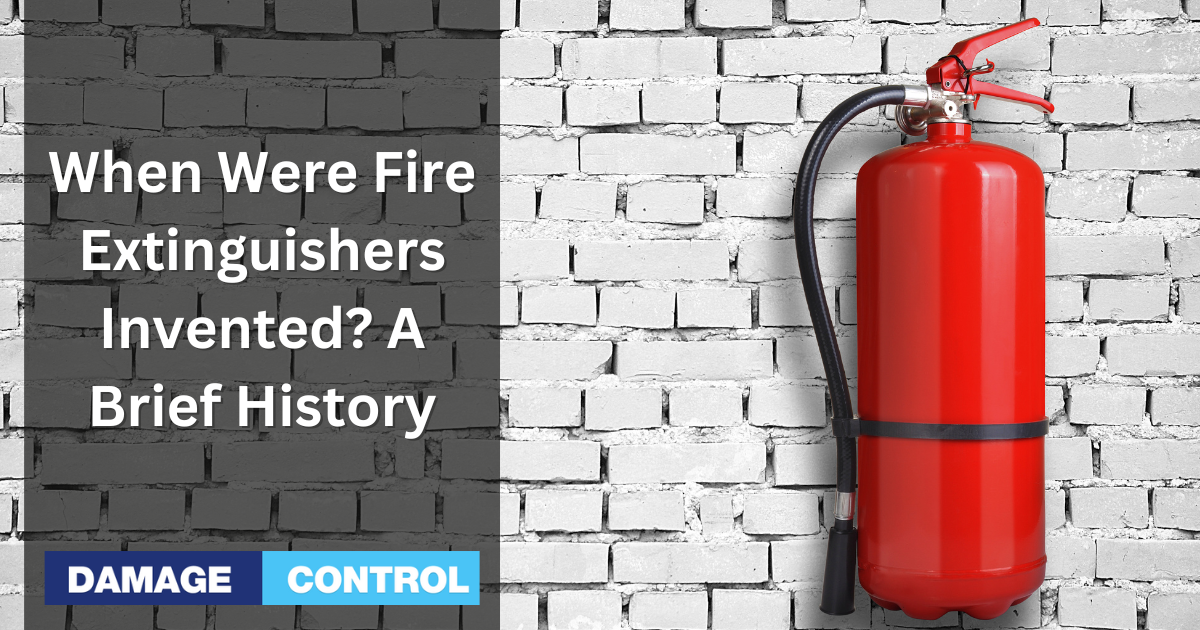It's a question that's been asked a lot over the years. The answer isn't as straightforward as you might think. There are records of fire extinguishers being used as far back as ancient Rome, but the modern fire extinguisher didn't get invented until a long time later.
In 1723, a chemist, Ambrose Godfrey, patented the first fire extinguisher in England. It consisted of a liquid fire extinguisher containing a gunpowder pewter chamber. The gunpowder was connected to a system of fuses that were ignited, exploding the gunpowder and scattering the solution. While it was a big step forward, it's nothing like today's fire extinguishers.
Until the early 19th century, there wasn't a portable fire extinguisher. Captain George William Manby created this version in 1819, with a copper vessel filled with pearl ash solution under pressure, and it worked for 3 years. A fire extinguisher is a vital safety device in homes, businesses, and public spaces around the world thanks to this invention.
Early Firefighting Methods
Ancient Times
In terms of firefighting methods, the oldest records date to ancient times. The Greeks and Romans had their own methods of dealing with fires. “Siphonarii” were Greeks who carried water buckets to put out fires. Romans, on the other hand, had a more organized approach, with a fire department called “vigiles” who patrolled the streets at night to prevent and deal with fires.
The ancient Chinese also had their own firefighting techniques. They used water, clay, and rice chaff to create a type of foam to smother fires.
Middle Ages
Europe's firefighting methods advanced during the Middle Ages. Firemen were organized into guilds, and they used hooks, ladders, and buckets to fight fires.
During this time period, hand pumps were an important firefighting method. They were large, hand-cranked pumps that could spray water on fires. They were often mounted on carts and pulled by horses.
Firefighting in the Middle Ages was still dangerous and difficult – fires were often left to burn themselves out, and firefighters couldn't do much to stop them once they got out of control.
Development of Portable Fire Extinguishers
18th Century
How did fire extinguishers come to be invented? In 1723, Ambrose Godfrey patented the first fire extinguisher, a container filled with a liquid to extinguish fires, and a pewter chamber filled with gunpowder. The gunpowder would explode, scattering the solution around the fire. It wasn't portable; portable fire extinguishers weren't invented until the 18th century.
19th Century
As portable fire extinguishers continued to get better, British inventor George William Manby invented the first portable pressurized fire extinguisher in the 19th century. The Extincteur was invented by Manby in 1818. It was portable and could extinguish small fires with 3 gallons of pearl ash solution and compressed air.
Portable fire extinguishers have improved over the years. A chemical foam extinguisher was developed in the 1860s, using a solution of sodium bicarbonate and tartaric acid to smother fires using a foam. Dry powder extinguishers came out in the 20th century, which used dry chemical powder to do the job.
Modern Fire Extinguishers
20th Century
A carbon dioxide extinguisher invented by Almon Brown Strowger in 1904 was the first to be mass-produced and sold commercially. In 1912, Pyrene Manufacturing Company of Delaware introduced the first carbon tetrachloride extinguisher. However, carbon tetrachloride was toxic and bad for the environment.
In the 1920s, foam extinguishers were introduced, effective in extinguishing fires caused by flammable liquids. Dry powder extinguishers were developed in the 1940s to fight fires caused by flammable gases and metals.
21st Century
Recent years have seen a lot of advancements in fire extinguishers. Halon fire extinguishers were used in airplanes and computer rooms because they worked without damaging electronics. The Montreal Protocol banned halon in 1987 after finding it toxic to the environment.
For instance, Class A extinguishers are designed for fires caused by ordinary combustibles like wood, paper, and cloth. They're also available in various sizes and types. On the other hand, Class B extinguishers are designed for fires caused by gasoline or oil, which are flammable liquids. You can learn about the different classes here.
Several fire extinguishers come with built-in LED lights, which can be helpful in low-light environments. They also come with pressure gauges, safety pins, and tamper-resistant seals.

